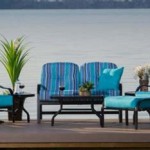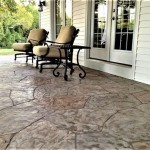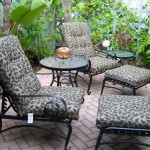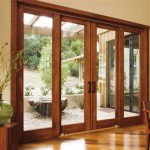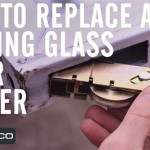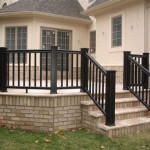Sun Shade Sail Patio Ideas: Creating Stylish and Functional Outdoor Spaces
Sun shade sails represent a versatile and aesthetically pleasing method for providing shade to patios and other outdoor areas. Their increasing popularity stems from their ability to combine functionality with visual appeal, offering a customizable solution to combat the harsh effects of the sun. This article explores a variety of sun shade sail patio ideas, focusing on design considerations, installation tips, and material choices to help create comfortable and stylish outdoor living spaces.
Understanding the Benefits of Sun Shade Sails
Before delving into specific patio ideas, it is vital to understand the fundamental advantages of using sun shade sails. Primarily, they offer effective protection from the sun’s ultraviolet (UV) rays. Exposure to UV radiation can lead to sunburn, premature aging, and an increased risk of skin cancer. Shade sails, constructed from UV-resistant fabrics, can significantly reduce UV exposure, creating a safer and more comfortable outdoor environment.
Furthermore, sun shade sails contribute to thermal comfort by reducing the ambient temperature. By blocking direct sunlight, they prevent surfaces from overheating, making the patio area more pleasant to use, especially during hot summer months. This cooling effect can also translate to energy savings, as it may reduce the need for air conditioning in adjacent indoor spaces.
Beyond their functional benefits, sun shade sails offer significant aesthetic advantages. They are available in a diverse range of colors, shapes, and sizes, allowing for creative design possibilities. They can be used to create visually striking architectural features, adding character and style to any patio. The dynamic forms and vibrant colors can transform a plain outdoor space into a welcoming and inviting environment.
Finally, sun shade sails are generally more cost-effective than permanent patio structures like pergolas or awnings. Installation is often simpler and less labor-intensive, requiring fewer materials and less specialized expertise. This makes them an attractive option for homeowners seeking a budget-friendly solution for patio shading.
Exploring Design Concepts for Sun Shade Sail Patios
The design of a sun shade sail patio should consider various factors, including the size and shape of the patio, the desired level of shade, the architectural style of the house, and the personal preferences of the homeowner. A well-designed shade sail arrangement enhances the functionality and aesthetics of the outdoor space.
One common design approach involves using a single, large shade sail to cover the entire patio area. This is a straightforward solution that provides comprehensive shade coverage. The shape of the sail can be triangular, square, or rectangular, depending on the dimensions of the patio and the desired aesthetic effect. It is important to ensure that the sail is properly tensioned and supported to prevent sagging or damage.
Another option is to use multiple shade sails in overlapping or interconnected configurations. This approach allows for greater flexibility in controlling the amount and direction of shade. For example, two triangular sails can be arranged to create a diamond-shaped shaded area, while multiple rectangular sails can be overlapped to provide layered protection from the sun. Overlapping sails can also create interesting visual patterns and add depth to the design.
The color of the shade sail plays a crucial role in the overall aesthetic appeal of the patio. Lighter colors, such as white or beige, reflect more sunlight and create a brighter and airier feeling. Darker colors, such as navy or charcoal, absorb more sunlight and provide more shade, but they can also make the area feel warmer. The choice of color should complement the existing color scheme of the house and the surrounding landscape. It is also possible to use different colors for different sails in a multi-sail configuration to create a visually dynamic effect.
The height and angle of the shade sail also affect the amount and direction of shade. Lower sails provide more shade, but they can also obstruct views and make the area feel smaller. Higher sails allow for more airflow and better visibility, but they may provide less shade. The angle of the sail should be adjusted based on the sun's path throughout the day to maximize shade coverage. Ideally, the sail should be positioned to block the sun during the hottest hours of the day.
Integrating the shade sail design with the surrounding landscape can further enhance the beauty and functionality of the patio. For example, the sail can be positioned to shade a seating area or a dining table, creating a comfortable outdoor living space. It can also be used to protect sensitive plants from the harsh afternoon sun. Vines or climbing plants can be trained to grow on the support posts of the shade sail, adding a natural element to the design.
Selecting the Right Materials and Hardware
The choice of materials and hardware is critical to the longevity and performance of the sun shade sail. The fabric, support posts, and hardware must be durable, weather-resistant, and capable of withstanding the stresses of wind, rain, and sun. Compromising on quality can result in premature failure and costly repairs.
Shade sail fabrics are typically made from high-density polyethylene (HDPE) or polyester. HDPE is a lightweight and breathable material that provides excellent UV protection and good resistance to tearing and stretching. Polyester is a stronger and more durable material that offers superior resistance to fading and mildew. Both materials are available in a variety of colors and densities.
The density of the fabric determines the amount of shade it provides. Higher-density fabrics offer greater shade coverage, but they can also restrict airflow and make the area feel warmer. Lower-density fabrics allow for more airflow, but they may provide less shade. The optimal density depends on the climate and the desired level of shade.
The support posts are typically made from wood, steel, or aluminum. Wood posts offer a natural and aesthetically pleasing look, but they require regular maintenance to prevent rot and insect damage. Steel posts are strong and durable, but they can be susceptible to rust if not properly treated. Aluminum posts are lightweight, corrosion-resistant, and require minimal maintenance. The choice of material depends on the budget, the desired aesthetic, and the expected lifespan of the structure.
The hardware used to attach the shade sail to the support posts must be strong and corrosion-resistant. Common hardware components include turnbuckles, shackles, snap hooks, and eye bolts. Turnbuckles are used to tension the shade sail, ensuring that it is taut and wrinkle-free. Shackles and snap hooks are used to connect the sail to the support posts. Eye bolts are used to anchor the support posts to the ground. All hardware should be made from stainless steel to prevent rust and corrosion.
Proper installation is essential to the performance and safety of the sun shade sail. The support posts must be securely anchored to the ground to withstand wind loads. The shade sail must be properly tensioned to prevent sagging and flapping. All hardware connections must be tightened and inspected regularly to ensure that they are secure. It is recommended to consult with a professional installer to ensure that the shade sail is installed correctly and safely.
Practical Installation Considerations for Sun Shade Sails
Successfully installing sun shade sails involves careful planning and execution. The process begins with assessing the site and determining the optimal location for the shade sail. This involves considering the direction of the sun, the prevailing winds, and the presence of any obstacles, such as trees or buildings. A detailed site plan should be created to map out the location of the support posts and the dimensions of the shade sail.
The next step is to select the appropriate support posts and hardware. The size and type of support posts will depend on the size and weight of the shade sail, as well as the soil conditions. It is important to choose posts that are strong enough to withstand the anticipated wind loads. The hardware should be made from high-quality stainless steel to prevent rust and corrosion.
Once the support posts and hardware have been selected, the posts must be securely anchored to the ground. This can be done by digging holes and setting the posts in concrete or by using ground anchors that are driven into the soil. The depth and diameter of the holes or the size of the ground anchors will depend on the soil conditions and the size of the posts.
After the support posts have been anchored, the shade sail can be attached. This is typically done by using turnbuckles, shackles, and snap hooks to connect the corners of the sail to the support posts. The turnbuckles are used to tension the sail, ensuring that it is taut and wrinkle-free. It is important to tension the sail evenly to prevent excessive stress on any one corner.
Once the shade sail has been installed, it should be inspected regularly to ensure that it is in good condition. The tension of the sail should be checked periodically and adjusted as needed. The hardware connections should be inspected for signs of rust or corrosion. Any damage to the fabric should be repaired promptly to prevent further deterioration.
In areas with heavy snowfall, it may be necessary to remove the shade sail during the winter months to prevent damage from the weight of the snow. The shade sail can be easily removed and stored for the winter and then reinstalled in the spring.
By following these practical installation considerations, homeowners can successfully install sun shade sails and enjoy the benefits of shade and protection from the sun for years to come. Proper planning, careful execution, and regular maintenance are essential to the longevity and performance of the shade sail.

Backyard Shade Sails Landscaping Network

31 Shade Sail Ideas Inspiration For Uses Your Home Clara Sails

Shade Sail Ideas Patioheatandshade

Gallery Of S Shade Sail Projects For Design Layout Ideas

Patio Shade How To My Outdoor Living Tips

Sunlax Sun Shade Sail 12 X12 Dark Grey Gray Triangle Canopy Shades For Outdoor Patio Pergola Cover Sunshade Sails Uv Blocking Canovas Covers

11 Excellent Backyard Patio Shade Ideas To Upgrade Your Space Structureworks

Shade Sails An Easy Diy Guide To Installing Your Own Patio Shades Reviewed

Patio Porch Sod Plantings A Backyard Transformation Contemporary Los Angeles By Flores Artscape Inc Houzz

Sun Shade Sails For Patios Outdoor Areas Van Nuys Awning
Related Posts

